#Lightweight Polypropylene Coveralls
Text
What materials are utilized in personal protective equipment (PPE) clothing?
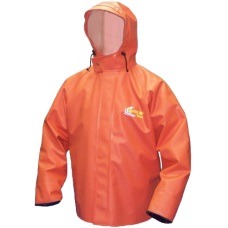
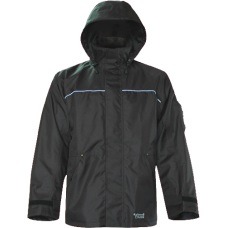


Personal protective equipment (PPE) apparel is produced from a variety of materials based on the level of protection necessary. Some of the most regularly utilized fabrics in PPE clothes are:
1. Polyethylene (PE) - This is a lightweight and flexible plastic substance that is often used in disposable gloves and aprons. It acts as a barrier against dirt and water but is not ideal for chemical or biological dangers.
2. Polypropylene (PP) - This is a thermoplastic polymer found in disposable coveralls and shoe covers. It is lightweight, breathable, and abrasion resistant, but it is not suited for chemical or biological protection.
3. Tyvek - This is a nonwoven material made of high-density polyethylene fibers. It is used in coveralls, gowns, and other PPE garments to protect against dust, grime, and liquids. It is also suitable for protecting against some chemical and biological dangers.
4. Nylon - This is a type of synthetic material that is typically seen in gloves and aprons. It is lightweight, flexible, and resilient, and it is perfect for abrasion and puncture protection.
5. Neoprene - This is a synthetic rubber substance that is typically seen in gloves and aprons. It protects against chemicals, oils, and solvents, and it is also resistant to punctures and abrasions.
6. Butyl - This is a type of synthetic rubber that is frequently used in gloves and suits. It offers resistance to a wide variety of substances, including acids, bases, and solvents.
7. Nomex - This is a heat-resistant material that is often used in PPE garments for firefighting and other high-temperature activities.
These are only a few of the many materials that can be found in PPE apparel. The material chosen will be determined by the specific risks prevalent in the workplace as well as the amount of protection necessary.
Check the best PPE Clothing here: https://www.wholesaleworkwearsupply.com/index.php?route=product/category&path=19001_19002_19003&page=2
#wholesaleonlinegroup#wholesaleworkwearsupply#wholesalesafetysupply#wholesale#wholesalevendors#workwear#safetywear#safetysupply#shopnow#tumbler
0 notes
Text
The Significance of Cleanroom Garments and Accessories
The cleanroom has undergone numerous upgrades and adjustments since it was first created as a specific artificial environment designed to reduce the concentration of airborne contaminants. Personnel from human sources are by far the main source of pollutants. The reason is that humans cannot be sterilised like inanimate objects. So even when they are in a still position, they continue to move about in search of dead skin, hair, germs, and other contaminants, even when they are completely still.
Therefore, it is essential for cleanroom staff to wear specially created attire that may fulfil two purposes:
Preventing environmental contamination from naturally occurring human pollutants
shielding the wearer from dangers in the region
Cleanroom coverall smock
Lab coats and cleanroom coverall smocks are worn to guard against pollutants and stop the build-up of ESD (electrostatic discharge) in cleanrooms. These are made using materials like polypropylene, SMS fabric, and polyethylene because they are cosy and breathable. The bonded seams prevent foreign objects from getting into the coat or smock. These shoe covers are flexible and lightweight and are manufactured to meet strict cleanroom standards.
Cleanroom shoe covers
Cleanroom shoe covers are lightweight, flexible, and made to rigorous cleanroom specifications. In order to improve traction and safety, they have non-skid PVC (polyvinyl chloride) tracks on the bottoms. It provides strong resistance to liquid splashes, dirt, and germs. In cleanrooms and medical settings, scrubs and cleanroom trousers reduce contamination. Cleanroom trousers also allow workers to handle delicate electronics while remaining lightweight and breathable.
There are manufacturers engaged in providing a range of garments and accessories for cleanrooms and healthcare facilities, such as cleanroom coveralls, smocks, cleanroom shoe covers, nitrile examination gloves, and more. If you need to have better control over cleanroom contamination, it is essential to invest in cleanroom garments and accessories that are approved for cleanrooms so you can control contamination as well as safeguard the people working in cleanroom environments.
#cleanroom coveralls reusable#cleanroom notebooks#buy surgical gloves online#nitrile examination gloves
0 notes
Text
What is the best material for protective coveralls?
Protective coveralls are essential for various industries, including construction, manufacturing, and healthcare. These coveralls offer protection against potential workplace hazards, such as chemicals, heat, and infectious diseases. The material used for protective coveralls plays a vital role in providing optimal protection while ensuring comfort and durability.
When selecting a material for protective coverall suit, several factors need to be considered, including breathability, durability, and resistance to hazardous substances. Here are some of the best materials for protective coveralls and their features.
1. Tyvek
Tyvek is a synthetic material that is lightweight, tear-resistant, and water-resistant. It is made of high-density polyethylene fibers, which provide excellent protection against chemical splashes and particles. Tyvek coveralls are ideal for industries that require protection from hazardous dust, asbestos, lead, and other substances.
One of the best features of Tyvek coveralls is that they are breathable, allowing air to circulate through the fabric to prevent overheating. They are also comfortable to wear and offer excellent coverage, with elastic cuffs and ankles to prevent particles from entering.
2. Vinyl
Vinyl is a synthetic material that is commonly used in protective coveralls to provide protection against chemicals and some biological fluids. Vinyl coveralls are easy to clean, durable, and resistant to punctures and tears. They are also affordable and can be used in a variety of industries, including food processing, cleaning, and healthcare.
One of the most significant advantages of vinyl coveralls is their superior barrier properties, making them ideal for environments where chemical exposure is a concern. They are also easy to put on and take off, with zippered fronts and elastic cuffs.
3. Polypropylene
Polypropylene is a thermoplastic polymer that is commonly used in protective coveralls because of its excellent resistance to chemicals, oils, and greases. Polypropylene coveralls are lightweight, durable, and breathable, making them an excellent choice for long hours of wear. They are also resistant to tears and punctures, providing optimal protection against hazardous particles.
Polypropylene coveralls are popular in several industries, including manufacturing, construction, and automotive. They are comfortable to wear, with elastic wrists and ankles and provide excellent coverage, protecting clothing from damage and contaminants.
4. Microporous Film
Microporous film is a breathable material that is commonly used in protective coveralls to provide protection against chemicals, particle contaminants, and biological hazards. Micro-porous film coveralls are lightweight, comfortable, and provide excellent breathability, making them ideal for extended use. They are also durable and resistant to tearing and punctures, offering optimal protection against hazardous particles.
Microporous film coveralls are ideal for environments where chemical exposure is a concern, such as pharmaceutical manufacturing, laboratories, and cleanrooms. They provide optimal protection against airborne particles, and their superior breathability ensures comfort during extended use.
Protective coveralls are essential in various industries, providing optimal protection against chemical splashes, particle contaminants, and biological fluids. The material used for these coveralls plays a vital role in ensuring adequate protection while ensuring comfort and durability.
Tyvek, vinyl, polypropylene, and micro-porous film are some of the best materials for protective coveralls. Each material provides unique features, such as excellent breathability, superior barrier properties, and exceptional durability.
When selecting a material for cheap disposable coveralls, it is essential to consider the industry needs, the hazardous substances, and the duration of use. With the right material, protective coveralls can provide optimal protection while ensuring comfort and durability.
0 notes
Text
The Role of Disposable Non-Woven Fabrics in Personal Protective Equipment (PPE)
Personal Protective Equipment (PPE) refers to specialized clothing, helmets, goggles, or other equipment that workers wear to protect themselves from hazards in the workplace. The purpose of PPE is to minimize exposure to a variety of risks that may cause serious injuries or illnesses, including physical, chemical, biological, or radiological hazards.
Examples of PPE include gloves, safety glasses, respirators, hard hats, earplugs, full-body suits, and face shields. The use of PPE is often regulated by industry-specific standards or regulations, and employers are responsible for providing PPE to their employees and ensuring that it is used correctly.
PPE is essential in many industries such as healthcare, construction, manufacturing, and agriculture. Its proper use can significantly reduce the risk of injury and illness in the workplace.
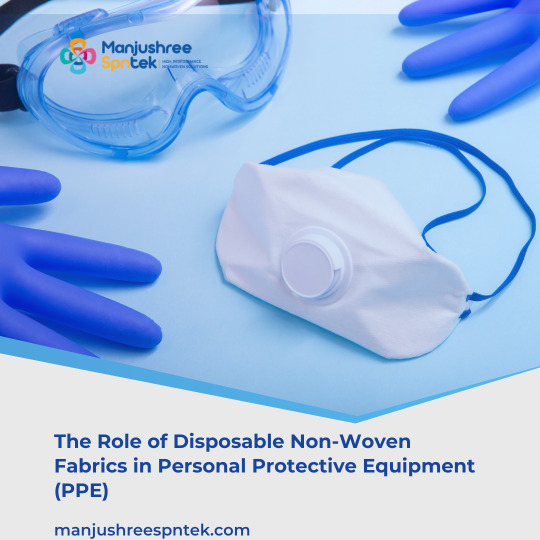
Disposable non-woven fabrics have become an essential component of PPE in various industries, particularly in healthcare, where they are used to protect healthcare workers from infectious diseases and harmful contaminants. Non-woven fabrics are made from thermoplastic materials, such as polypropylene, and are produced by spinning and bonding together fibers to form a web-like material.
Non-woven fabrics have several advantages over woven fabrics. They are lightweight, breathable, and inexpensive to produce, making them an ideal choice for disposable applications. They are also resistant to moisture and chemicals, which is important when working with hazardous materials.
In the healthcare industry, non-woven fabrics are commonly used in PPE such as gowns, face masks, and surgical drapes. These PPE items protect healthcare workers from exposure to bodily fluids and infectious agents. Non-woven gowns are typically used during surgical procedures to protect both the patient and the healthcare worker from cross-contamination. Face masks are used to protect against respiratory infections, and surgical drapes are used to cover patients during surgical procedures to prevent contamination of the surgical site.
Non-woven fabrics are also used in industrial settings, where they are used in PPE such as coveralls and gloves to protect workers from exposure to chemicals, particulates, and other hazardous materials. Non-woven coveralls protect against dust, chemicals, and other particles, while gloves are used to protect the hands from exposure to chemicals and other hazardous materials.
The use of non-woven fabrics in PPE has increased significantly during the COVID-19 pandemic. In addition to healthcare workers, non-woven face masks have become essential for the general public to prevent the spread of the virus. Non-woven masks are effective in filtering out droplets and aerosols that may contain the virus. They are also more comfortable to wear than traditional surgical masks, as they are lighter and less restrictive.
The demand for non-woven fabrics has skyrocketed during the pandemic, leading to shortages and price increases. This has led to research into alternative materials and production methods to meet the growing demand for PPE. Some manufacturers are exploring the use of recycled materials, such as PET bottles, to produce non-woven fabrics. Others are exploring the use of nanofibers, which are thinner and more efficient at filtering particles than traditional non-woven fabrics.
The proper disposal of non-woven PPE is also important to prevent the spread of infectious diseases and harmful contaminants. Non-woven PPE should be disposed of in a designated waste container, and healthcare workers should follow proper infection prevention and control procedures when handling and disposing of PPE.
In conclusion, disposable non-woven fabrics play a critical role in personal protective equipment, particularly in the healthcare industry. Non-woven fabrics protect against infectious diseases and harmful contaminants and are lightweight, breathable, and inexpensive to produce. Non-woven fabrics have become essential during the COVID-19 pandemic, and research is ongoing to explore alternative materials and production methods to meet the growing demand for PPE. Proper disposal of non-woven PPE is important to prevent the spread of infectious diseases and harmful contaminants.
If you are glazed to know more about Disposable Non-Woven Fabrics then Manjushree spntek can simply help you with it and you can also reach us at [email protected].
0 notes
Photo

https://www.disposablesgowns.com/EN14126-Disposable-Medical-Coverall.htmlEN14126 Disposable Medical Coverall
The Medical coverall is composed of hooded top and trousers, which is one-piece type.The product is made of non-woven polypropylene and polyethylene film. Zip front opening covered by self adhesive flap, elastic at cuffs,ankles,hood and waist. It is lightweight , durable and breathable, also provides high structure strength , together with excellent tensile, tear and abrasion resistance.The coverall is soft and comfortable to wear. It is chemical,water and bacteria resistance.Medical coverall are used for provide barrier and protection for medical personnel to contact with potentially infectious patients' blood, body fluids, secretions and airborne particles.
0 notes
Text
Chem-Protekt Coverall - Microporous material Type 5/6 - Superior
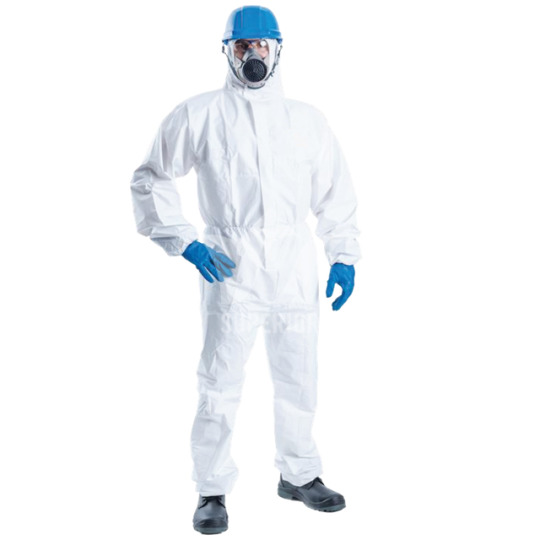
Cleanroom Sleeve Protectors developed from 100% coated polypropylene material. Designed to provide maximum protection against particulates and contaminants
Description;
The Superior Chem-Protekt Coverall with Hood is designed for use in the most critical of controlled enviornments. Made from an antistatic, microporous material for the highest level of barrier protection and contamination control.
Features
Offers strong, all-round protection
Fully elasticated hood, ankles and wrists
Waterproof and durable
Lightweight, comfortable material
Especially suited to working with chemicals
Antistatic
Offers a good liquid penetration resistance for premium protection
Approved in accordance with EN1149-1, EN1073-2 & EN14126
Offers Type 5/6 Cat III Protection
Application
Pharmaceutical handling
Chemical protection
Lead and asbestos abatement/remediation
General maintenance/operations
Spray painting and general clean-up
0 notes
Text
Polypropylene Lightweight Disposable Protective Clothing | International Enviroguard
Polypropylene is a lightweight, breathable fabric that provides economical protection for various work environment applications. Polypropylene is appropriate for wear in certain non-hazardous workplaces and is a low-cost solution for protecting workers against dirt and grime. International Enviroguard’s polypropylene assortment includes: coveralls, bouffants, beard restraints, shoe covers, lab coats and more.Economical protection against dirt, grime and particulates in non-hazardous environments. Breathable, lightweight fabric helps keep wearer cool. Elastic wrists for comfortable, secure fit. Recommended applications include food processing, construction, pharmaceuticals, environmental cleanup and more.
Read More:- https://int-enviroguard.com/disposable-protective-clothing/polypropylene.html
0 notes
Text
Disposable Waterproof Oil-resistant Protective Coverall For Spray Painting Decorating Clothes Overall Suit Work wear
Disposable Protective Clothing Anti-Dust Isolation Clothing Uniforms Non-Porous
Lightweight, breathable coverall fabric provides a cool, comfortable work environment
Dust and waterproof, epidemic prevention barrier, prevent blood penetration, anti-static
Front long zipper,elastic cuffs, waist,ankles and attached hood ,serged seams to help provide higher standard protection.
Made of lightweight spunbond meltblown polypropylene(SMS) material.
COMMON USES in clinics, hospitals, laboratories, workshops, construction sites, painting, commercial and household inspections, keeping off insulaton etc. for general isolation and protection
Size
US
UK
EU
Bust
Waist
Length
M
6
10
36
142cm/55.91''
93cm/36.61''
165cm/64.96''
XL
10
14
40
162cm/63.78''
105cm/41.34''
175cm/68.90''
Read the full article
0 notes
Text
What materials are utilized in personal protective equipment (PPE) clothing?
Personal protective equipment (PPE) apparel is produced from a variety of materials based on the level of protection necessary. Some of the most regularly utilized fabrics in PPE clothes are:
1. Polyethylene (PE) - This is a lightweight and flexible plastic substance that is often used in disposable gloves and aprons. It acts as a barrier against dirt and water but is not ideal for chemical or biological dangers.
2. Polypropylene (PP) - This is a thermoplastic polymer found in disposable coveralls and shoe covers. It is lightweight, breathable, and abrasion resistant, but it is not suited for chemical or biological protection.
3. Tyvek - This is a nonwoven material made of high-density polyethylene fibers. It is used in coveralls, gowns, and other PPE garments to protect against dust, grime, and liquids. It is also suitable for protecting against some chemical and biological dangers.
4. Nylon - This is a type of synthetic material that is typically seen in gloves and aprons. It is lightweight, flexible, and resilient, and it is perfect for abrasion and puncture protection.
5. Neoprene - This is a synthetic rubber substance that is typically seen in gloves and aprons. It protects against chemicals, oils, and solvents, and it is also resistant to punctures and abrasions.
6. Butyl - This is a type of synthetic rubber that is frequently used in gloves and suits. It offers resistance to a wide variety of substances, including acids, bases, and solvents.
7. Nomex - This is a heat-resistant material that is often used in PPE garments for firefighting and other high-temperature activities.
These are only a few of the many materials that can be found in PPE apparel. The material chosen will be determined by the specific risks prevalent in the workplace as well as the amount of protection necessary.
Check the best PPE Clothing here: https://www.wholesaleworkwearsupply.com/index.php?route=product/category&path=19001_19002_19003&page=2
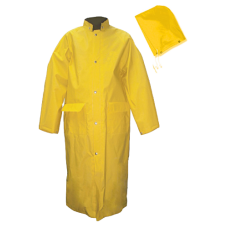
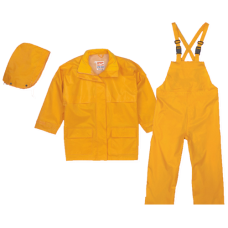
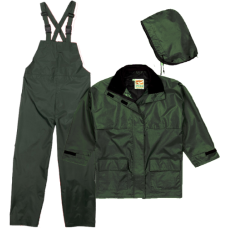
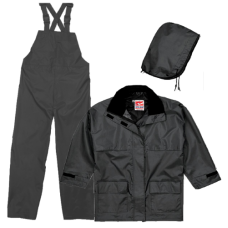
#wholesaleonlinegroup#wholesaleworkwearsupply#wholesalesafetysupply#wholesale#wholesalevendors#workwear#safetywear#safetysupply#tumbler
1 note
·
View note
Text
Introducing the new CoverME XP Coverall
Concord, ON January 24, 2017: Ronco, one of Canada’s leading PPE (Personal Protective Equipment) manufacturers has expanded its body protective equipment by introducing the new CoverME XP Coverall.
In every work environment, worker safety is always of utmost importance. Coveralls protect the wearer’s skin against hazardous dry and wet particles and chemical sprays. Disposable coveralls act as a lightweight, full body protector allowing the individual to work freely and safely.
Ronco’s newest addition to the CoverMe family is XP coveralls. The XP coverall provides protection against infective agents for at least 60 minutes and hence is rated Type 5/6. They are made with a fluid-resistant microporous film that is laminated to a polypropylene lining. What does this mean? They’re lightweight, breathable and extremely comfortable. XP coveralls are ideal for a variety of work environments such as hospitals, food processing, industrial, laboratories and many others.
Mr. Ron Pecchioli, President at Ronco said: “Protection from hazards in a workplace should be the number one priority of every employer. That is why, we at Ronco, work so hard to bring new products to the marketplace that will enhance the safety of every employee working in hazardous environments. Safety and quality are always our number one priority.”
Ronco CoverMe XP Coveralls are available across North America through a network of authorized distributors. For more information contact Ronco at 1.877.663.7735 or at [email protected] or visit www.ronco.ca.
About Ronco: Established in 1996, Ronco is a world class manufacturer of safety products. With a focus on consistent quality and outstanding customer service, Ronco has developed a strong presence across Canada for delivering Personal Protective Equipment (PPE) solutions for Head, Hand, and Body, targeting the food, healthcare and industrial sectors.
Ronco is the first glove manufacturer in North America to obtain ISO 22000 certification for Food Safety Management Systems.
Inna Shtromvaser
Marketing Manager
905.660.6700 x 1253
[email protected]
0 notes
Text
How to Choose the Best Disposable Coveralls?
When it comes to protecting yourself from hazardous materials or potential contamination, disposable coveralls are a cost-effective and efficient solution. However, choosing the best disposable coveralls for your needs can be overwhelming with the many options available on the market. In this article, we will discuss how to choose the best disposable coveralls.
Consider the material
Disposable coveralls with hood are commonly made from various materials such as polypropylene, Tyvek, microporous film, and SMS. Polypropylene is lightweight and the most cost-effective, but it is not as durable as other materials. Tyvek is more durable, breathable, and offers better protection against chemicals but is more expensive. Microporous film is soft and comfortable, but it may not be as breathable as other materials. SMS (spunbond-melt blown-spunbond) is a combination of materials that provides more resistance to liquids and chemicals. Consider the hazards you will be exposed to and choose a material that offers the necessary protection.
Evaluate the level of protection needed
Disposable coveralls are designed to protect against various hazards such as chemicals, dust, fluids, and germs. Consider the type of hazard you will encounter and choose a disposable coverall with the appropriate level of protection. For example, if you are working with chemicals, choose coveralls that are resistant to abrasions and chemicals.
Determine the size
Disposable protective coveralls come in different sizes, so it's essential to choose a size that fits well. Coveralls that are too small or too big can cause discomfort and impact performance. Ensure that the coveralls fit well around the wrists, ankles, and face to prevent exposure to hazardous materials. Some manufacturers provide sizing charts to help you choose the right size.
Check for certifications
Ensure that the disposable coveralls meet the necessary industry standards such as ASTM D6978 for chemical permeation resistance or EN 14126 for protection against biological hazards. Certification indicates that the coveralls have been tested and approved for their intended use. Some manufacturers also provide testing data and certifications on their product packaging or websites.
Choose the right design
Disposable coveralls come in different designs such as open cuffs, elastic cuffs, and hooded. Open cuffs provide ease of movement, but they may not offer adequate protection. Elastic cuffs offer a better seal around the wrists and ankles while hooded coveralls provide protection for the head and neck. Choose a design that meets your needs and has the necessary features for your intended use.
Consider the environment
The environment you work in can determine the type of disposable coveralls you choose. For example, if you work in hot environments, breathable coveralls may be a better option. If you work in wet environments, choose coveralls made from materials that offer resistance to liquids. If you work in areas with exposure to hazardous particles, such as asbestos or lead, choose coveralls that meet the necessary safety requirements.
Choosing the best disposable coveralls involves considering various factors such as the material, level of protection, size, certifications, design, and environment. Disposable coveralls are a cost-effective and efficient solution for protecting yourself from hazardous materials or potential contamination. Choosing the right one will not only provide adequate protection but also ensure comfort, ease of movement, and performance.
1 note
·
View note